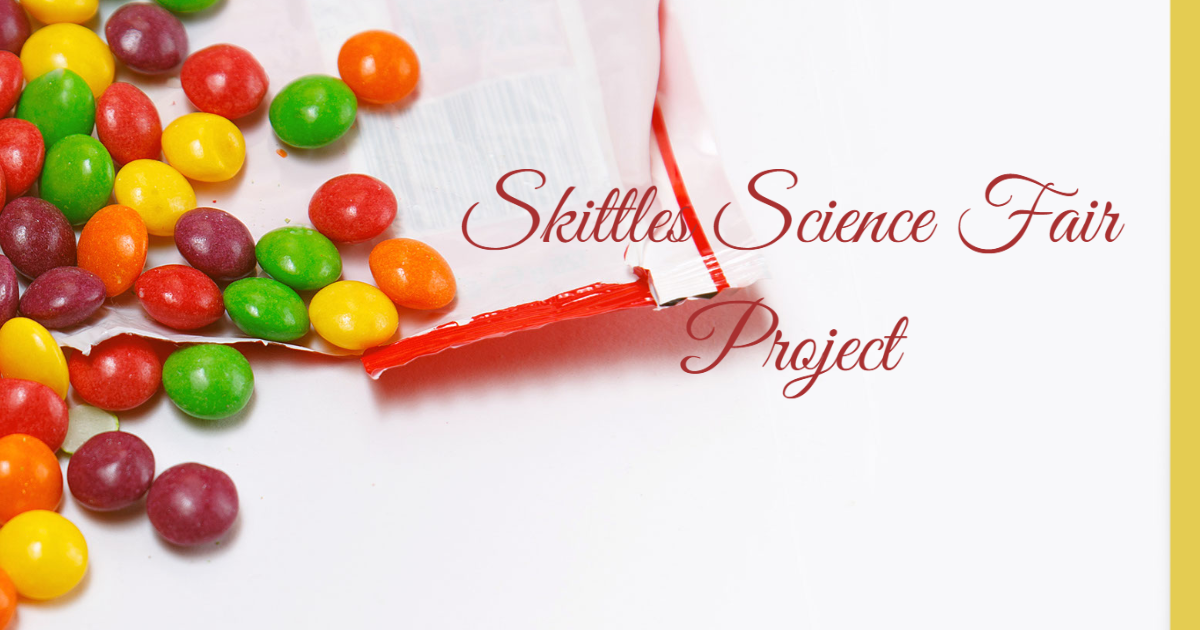Skittles Science Fair Project
Skittles Science Fair Project Intro
The skittles science fair project will surely be a hit because everyone loves the candy. You can enjoy the scraps, and the colorful experiment boards will be a hit with your classmates. This science experiment is easy. You can spare some skittles, and it will keep your child amused for a while. The water molecules in warm water dissolve faster than in cold water. When the water molecules come into contact with the sugar in the candy, they cause it to dissolve faster. So, what materials do you require, and how to perform it?
What do you need to do?
You will need a pack of skittles. Also, you require 1/4th cup of cold water, warm water, and two white plates. First, arrange the skittles in a single-row colored pattern around the edge of the white plate. Pour over enough cold water to cover all the skittles and the container. On the second plate, pour the warm water over the candy. Watch a rainbow creating a whirl of colors over the second plate with warm water. Also, you can observe if anything happens to the first plate filled with cold water. However, it is one experiment. There is more that you can do with this candy.
Other Skittles Science Fair Projects
There are more experiments that you can perform with this exciting candy. So get the mouth-watering packets ready. However, could you not eat it yet? First, try out these exciting tests with your learner.
Test which liquid can dissolve the color faster
It is an easy-to-perform experiment with our favorite candy. Select the liquids you want to try out. These can be any ones you choose. Make sure to write down your predictions about the results. Which one will dissolve the color quicker? Bleach will dissolve it faster, or will the vinegar be the winner? You can also make a chart for the types of liquids, skittle colors, and rank. You require cups, a pen, a notebook, a camera to take pictures, liquids, a stopwatch, and skittles. You can also note down the time it takes. You can try various solutions: lemon juice, vinegar, or alcohol.
Skittles for density column
This skittles science fair project is exciting because you will have a rainbow color glass at the end. The experiment is for teaching children about the density of a dissolvent. Therefore, the liquid or solution mixed with the most things has the most density and mass. It will sink because it is heavier. Use cups or testing tubes to fill with the same color skittles. Place yellow color ones in the same, and purple ones in another. However, use different quantities.
Take twelve purple candies in one cup or tube and seven yellow in another, for example. Mix these with two tablespoons of water. Pour the purple one into a glass, and carefully pour the yellow over it. The yellow color candies have less density and are lighter. So, the yellow one will float over the purple. Do the same with more colors, and use less quantity to create a rainbow each time.
How many same-colored skittles are there in a bag?
It is an interesting skittles science fair project. All you have to do is to fill transparent containers with the same color skittles. Record the number and keep it to yourself. And ask your classmates or friends about the number of candies inside. Record the results from each individual on a paper. The students can make a bar chart, pie chart, or bar graph. Did anyone guess the right number? Which color skittles was thought to be in more quantity? You can ask so many questions with this experiment.

